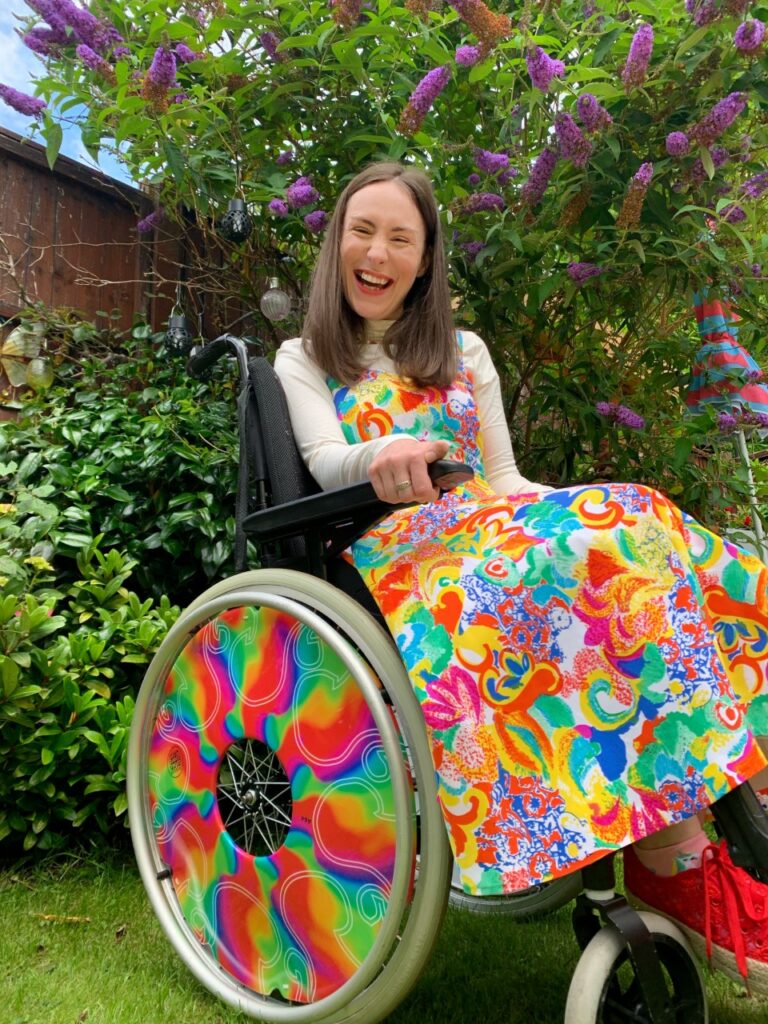
July is Disability Pride Month. At first glance, Disability Pride, can be considered as unwavering confidence, however this is one small part and may not always necessarily mean fierce confidence.
When I first think about Disability Pride I think about what my disability means to me. I think about my Cerebral Palsy and how it is a part of me. A big part of me that shapes my every day. From varying ways of my tremors, to the amount of energy I have, to the level of speed at which I work at, my CP looks different everyday too. By getting to know and acknowledging the different parts of my CP, I know myself better.
Getting to know and understanding different aspects of my disability, I am able to communicate my disability with others. Though this may sound like a basic thing, it can also require courage to say such things, especially to people who may not be familiar with your disability. I first wrote on this blog about my CP—likening my CP to a lifelong teacher-. Though some of my thoughts may have matured from a few years back, learning about disability from different perspectives in the community.

I’d like to think that through clear, honest and insightful conversations about disability, stigma can be reduced, challenging views about disabled people. It is a way to really see disabled people. It is a way to hear disabled people’s voice. By inviting such conversations change can start to be implemented.
Access can be put in place, in one vain in terms of physical access, i.e. lifts, ramps, hearing loops, audio descriptions, but also in terms of institutional access, i.e. work, education. Yes, a lot of places do have such facilities in place, but it’s not everywhere, and society cannot be branded as fully accessible and inclusive if not all of society is accessible and inclusive.
We have seen over the last year just how much disabled access have been but to the bottom of the pile. For example, it has been observed just how quickly things were put in place for people to work from home when in lockdown, even though this has been it requested by disabled people time and time again for such adjustments to be in place. Other clear indicators that have demonstrated that disabled access have been seen as unimportant is when, in another example, some restrictions were eased and cafes and restaurants were allowed to offer outside dining and tables and chairs were placed on pavements, which meant that this made it impossible for people with mobility aids to navigates streets that had tables and chairs on them. Or even more shocking when these tables and chairs have been set up in disabled bays! Need I say more!
Though I have given a few examples of inaccessibility, this must not overshadow our pride and celebrations in how far we have come. We can take stock of these achievements and can act as a reminder that access can improve. This pride and the celebrations of the disability community can also inform and trigger thinking points in others about how they can help accessibility for disabled people be better.

Events such as Disability Pride Month is an opportunity to highlight identity or what you have (depending on whether you prefer identity-first or person first language) is not shameful or dirty or something to keep under wraps. It is to highlight a part of who you are. It is to highlight the beautiful community that disabled people have built and the milestones we have crossed together. It is to highlight how we can continue to move forward and keep campaigning for change. This is what Disability Pride Month means to me.
I hope you have a lovely Disability Pride Month, however you are celebrating.
All my love XX


Thank you so so much Emma XX